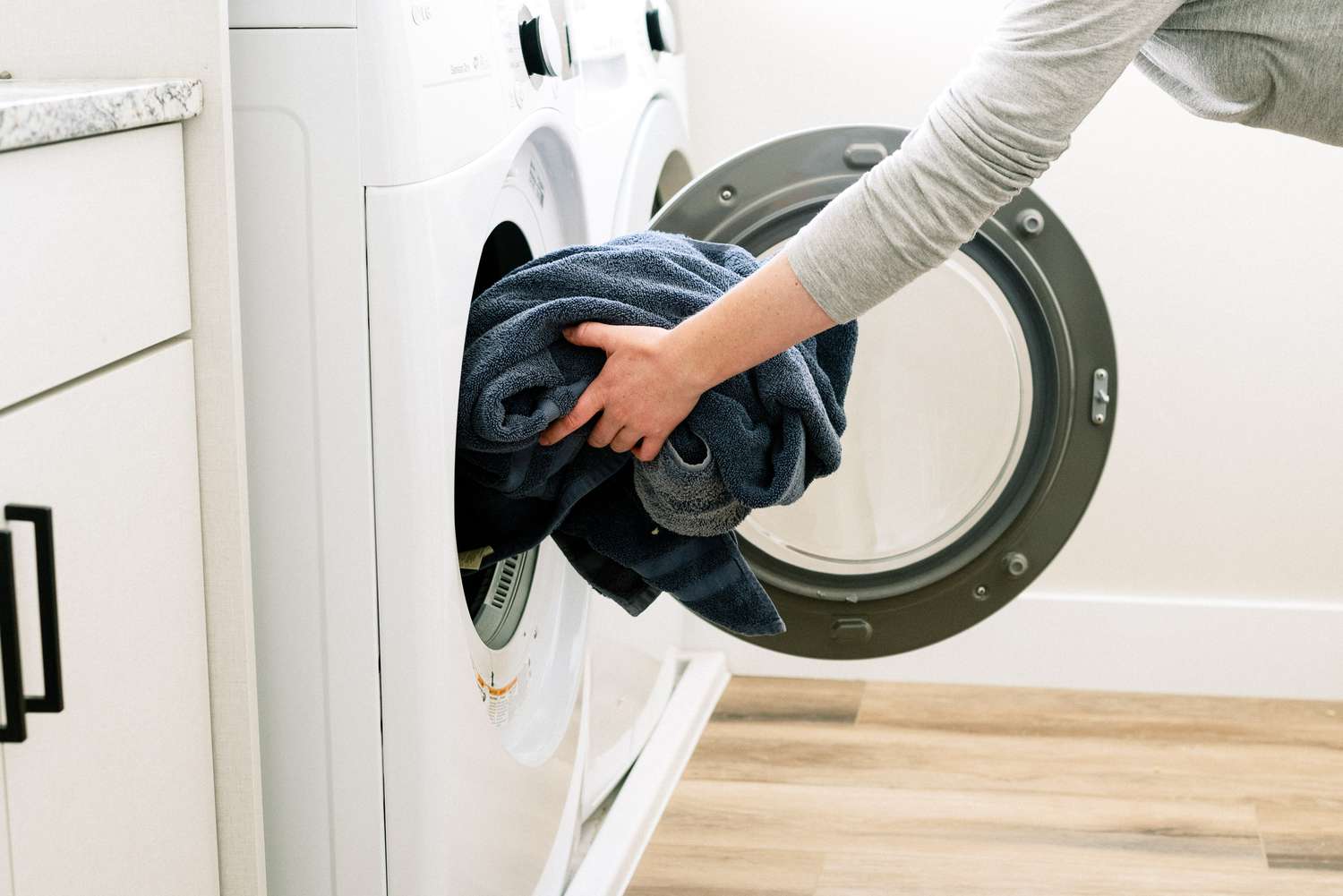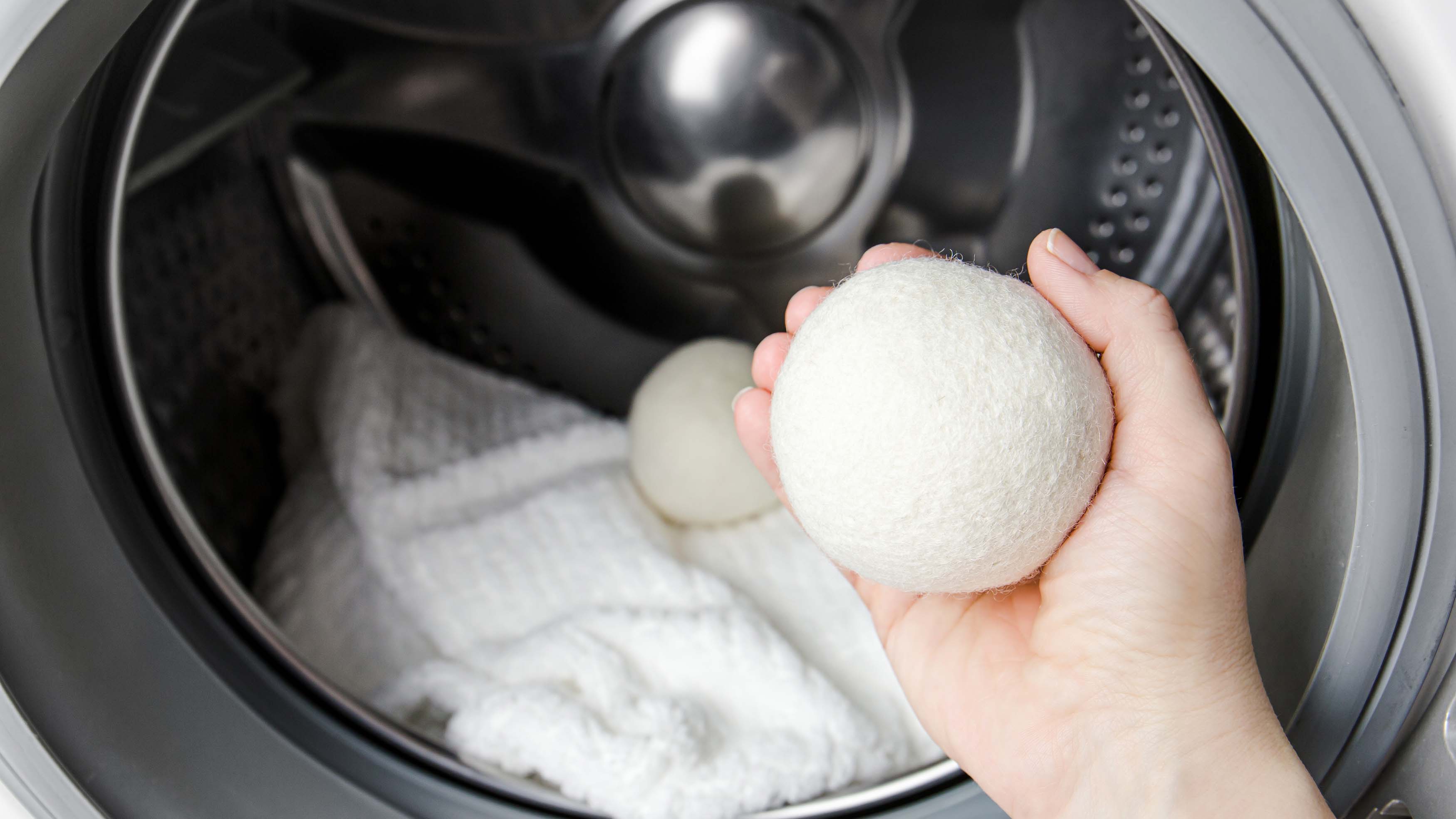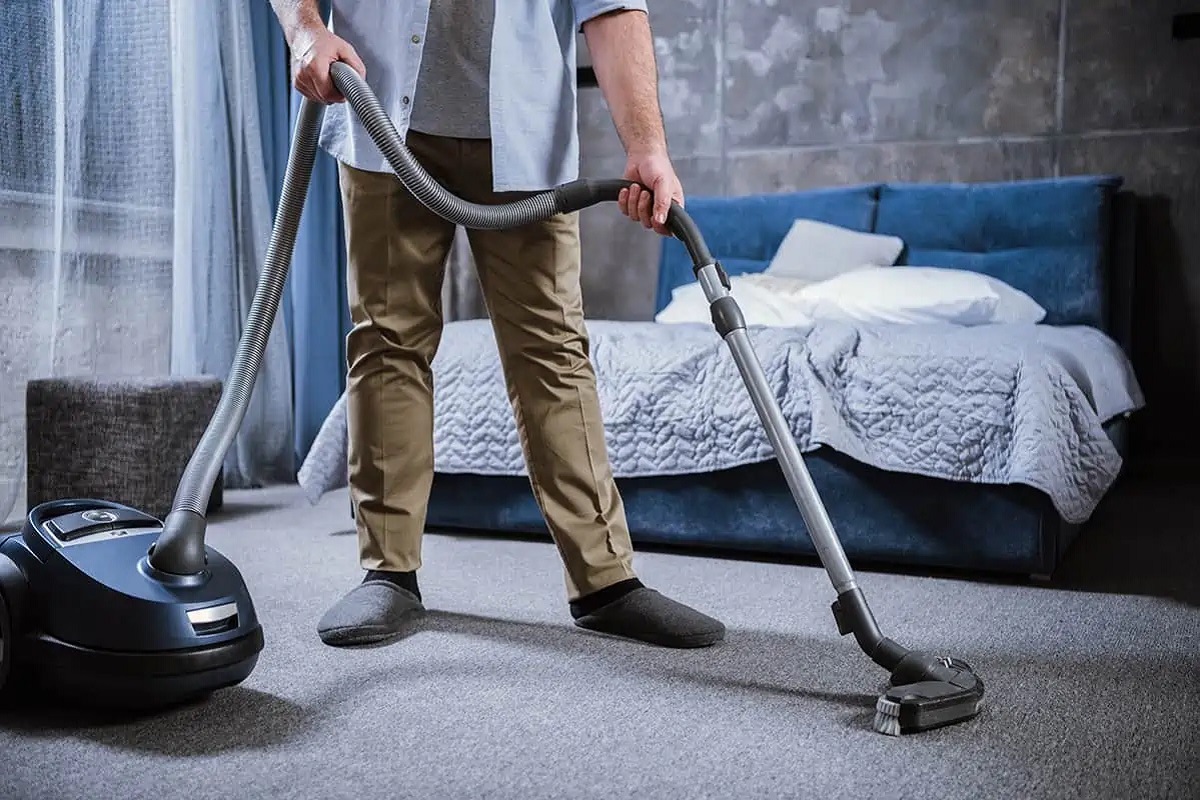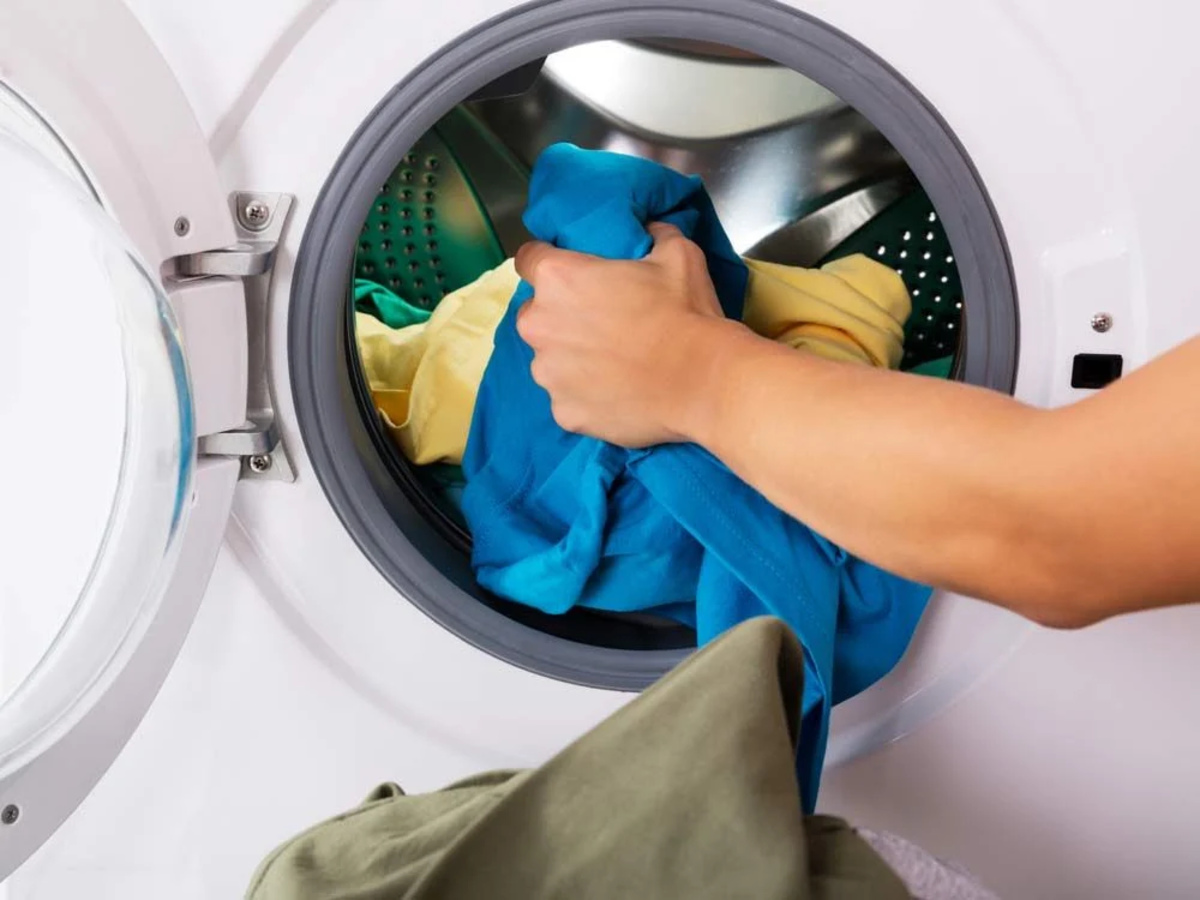Home>Interior Design>Things You Should Not Put In A Dryer, Laundry Experts Warn


Interior Design
Things You Should Not Put In A Dryer, Laundry Experts Warn
Modified: December 7, 2023
Discover the top items that should never be put in a dryer, as advised by laundry experts. Safeguard your clothes and appliances with our essential interior design tips.
(Many of the links in this article redirect to a specific reviewed product. Your purchase of these products through affiliate links helps to generate commission for Storables.com, at no extra cost. Learn more)
Introduction
When it comes to doing laundry, throwing everything in the dryer may seem like the easiest and most convenient option. However, laundry experts warn that there are certain items you should never put in the dryer. From delicate fabrics to items that can be damaged by heat, it’s important to know what to avoid to protect your clothes and prevent potential accidents.
While the dryer can be a time-saving appliance, it can also be a source of frustration if not used properly. Understanding which items should not be placed in the dryer can help preserve the quality and longevity of your clothing, as well as prevent shrinking, fading, and other forms of damage. So, before you hit the start button on your dryer, make sure you’re aware of the items that should be kept out.
This article will delve into the reasons behind avoiding certain items in the dryer, provide a comprehensive list of specific items that should not be subjected to heat, offer alternative methods for drying delicate items, and share tips to prevent damage to your clothing while using the dryer.
Remember, laundry is not just about cleanliness, but also about preserving the integrity and appearance of your garments. By following the advice of laundry experts, you can ensure that your clothes remain fresh, vibrant, and in optimal condition.
Key Takeaways:
- Protect your clothes by avoiding the dryer for delicate fabrics, items with embellishments, and heat-sensitive materials. Opt for alternative drying methods to preserve their quality and longevity.
- Follow expert tips to prevent damage in the dryer, such as sorting clothes by fabric, using lower heat settings, and checking pockets. By taking these precautions, you can keep your clothes looking fresh and vibrant for years to come.
Reasons to avoid putting certain items in the dryer
While the dryer is a convenient appliance for drying clothes, there are several reasons why certain items should be kept out. Understanding these reasons will help you make informed decisions when it comes to laundry care:
- Fabric Sensitivity: Many fabrics are sensitive to high heat, which can cause them to shrink, warp, or lose their shape. Materials such as silk, wool, lace, and satin are especially delicate and should be air-dried or handled with care.
- Potential Damage: Some clothing items may be adorned with delicate embellishments, such as sequins, beads, or embroidery. The heat from the dryer can cause these embellishments to melt, come loose, or lose their shine. It’s best to air-dry such items or follow the care instructions specified by the manufacturer.
- Fading and Color Bleeding: Colored garments, particularly dark or vibrant ones, are susceptible to fading in the dryer. Heat and the constant tumbling action can disturb the fibers and cause colors to fade over time. Additionally, items with contrasting colors or prints may bleed, leading to irreversible damage.
- Garment Structure: Some items, such as bras, swimsuits, and structured garments, have specific shapes that can be altered by the heat of the dryer. Underwires in bras may become misshapen or break, and swimwear may lose its elasticity. Hanging or laying these items flat to dry will help maintain their structure.
- Specialty Fabrics: Certain fabrics require specialized care to maintain their unique properties. For example, waterproof or water-resistant garments, like raincoats or jackets, often have coatings that can be damaged by the heat of the dryer. Delicate fabrics like cashmere or angora may also lose their softness and become damaged when exposed to excessive heat.
- Fire Hazard: Heat combined with certain materials can become a fire hazard. Items containing flammable substances such as gasoline, oil, or cleaning solvents should never be placed in the dryer, as they can ignite and cause a dangerous situation. It’s crucial to always read the care labels and avoid drying items that pose a fire risk.
By being mindful of these reasons, you can prevent irreparable damage to your clothing, preserve their quality, and ensure that they last longer. Now that you understand why certain items should be kept out of the dryer, let’s dive into the specific items that should receive alternative drying methods.
Specific items that should not be put in the dryer
When it comes to laundry, it’s important to be aware of specific items that should not be subjected to the heat of the dryer. By following these guidelines, you can avoid potential damage and extend the lifespan of your garments:
- Delicate Fabrics: Items made of delicate fabrics such as silk, lace, chiffon, and satin should never be put in the dryer. These fabrics can easily shrink, lose their shape, or become damaged by the heat. Instead, air-dry them by laying them flat on a towel or using a mesh drying rack.
- Wool and Cashmere: Wool and cashmere are prone to shrinking and losing their softness when exposed to high heat. To keep these items in optimal condition, hand wash them or use a gentle cycle in a washing machine and then lay them flat to dry on a clean towel.
- Jeans: While jeans can withstand the heat of the dryer, excessive drying can cause them to shrink and fade rapidly. To preserve the color and shape of your jeans, turn them inside out before washing and hang them to air dry, or use a low heat setting if using the dryer.
- Elastic Items: Clothing items with elastic bands, such as bras, underwear, and swimwear, should be air-dried or dried on a low heat setting. High heat can weaken the elastic, causing it to lose its stretch and support.
- Items with Embellishments: Clothing items with delicate embellishments like beads, sequins, or rhinestones should not be placed in the dryer. Instead, lay them flat to dry or hang them carefully to avoid damaging the embellishments.
- Heat-Sensitive Fabrics: Fabrics that are heat-sensitive, such as vinyl or plastic-coated items like raincoats or shower curtains, should never be put in the dryer. High heat can cause the material to melt or warp. Wipe these items with a clean cloth or sponge and allow them to air dry.
- Items with Leather: Clothing items with leather accents or details, such as jackets or pants, should never be put in the dryer. Heat can dry out the leather and cause it to crack or lose its luster. Instead, hang these items to dry and condition the leather periodically.
By avoiding the dryer for these specific items, you can ensure their longevity and maintain their quality. However, it’s essential to have alternative methods for drying them effectively. Let’s explore some of these methods in the next section.
Tip: Avoid putting delicate items like lingerie, swimsuits, and activewear with elastic in the dryer to prevent damage and maintain their shape and elasticity.
Alternative methods for drying delicate items
When it comes to drying delicate items that shouldn’t be placed in the dryer, there are alternative methods that can ensure their safety and preserve their quality. Here are some effective ways to dry delicate items:
- Air Drying: Air drying is one of the easiest and safest methods for drying delicate items. Simply lay the item flat on a clean towel or use a mesh drying rack. Make sure to reshape the item if necessary and allow it to air dry naturally.
- Hanging: Hanging delicate items to dry can help maintain their shape and prevent wrinkles. Use padded hangers for heavier items like dresses or blazers to avoid stretching or distortion. Hang the garments in a well-ventilated area away from direct sunlight.
- Flat Drying: Some delicate items, such as sweaters or knitted garments, should be dried flat to prevent stretching. After gently squeezing out excess water, lay the item flat on a clean towel or a drying rack. Reshape the garment to its original size and allow it to air dry.
- Shaping: For items that need to retain their shape, such as hats or molded bras, use a shaping tool or a form to maintain their structure during the drying process. This will help them dry in the desired shape without losing their form.
- Room Drying: In some cases, delicate items like lingerie or swimwear can be left to dry in a well-ventilated room. Hang them on a drying rack or clothesline away from direct sunlight or heat sources. This method allows for gentle air circulation, preventing damage and ensuring proper drying.
- Spot Drying: If only a specific area of a delicate item is wet, such as a stain or spill, you can use a clean cloth or towel to gently blot the affected area. Avoid rubbing, as this can cause further damage. After spot drying, lay the item flat to air dry completely.
- Professional Cleaning: For items that require extra care, such as silk dresses or tailored suits, consider taking them to a professional cleaner. They have the expertise and knowledge to handle delicate fabrics and ensure proper drying without causing any harm.
By utilizing these alternative drying methods, you can protect your delicate items and extend their lifespan. However, it’s important to note that prevention is the best course of action. Taking steps to avoid unnecessary washing or exposure to dirt and stains can reduce the frequency of washing and minimize the need for drying.
Now that you have a good understanding of alternative drying methods for delicate items, let’s explore some tips to prevent damage to your clothing when using the dryer.
Tips for preventing damage to clothing in the dryer
To ensure that your clothing remains in good condition when using the dryer, it’s important to follow these tips and guidelines:
- Read the Care Labels: Always check the care labels of your clothing items before putting them in the dryer. The labels provide specific instructions on how to properly care for and dry the garments. Following these guidelines will help prevent any potential damage.
- Sort Clothing by Fabric: Separate your laundry into different loads based on fabric type. This will prevent color bleeding and ensure that delicate fabrics are not exposed to excessive heat. Group items such as towels, jeans, and heavy fabrics together, and separate lightweight and delicate items like lingerie or silk garments.
- Use a Lower Heat Setting: Adjust the heat setting on your dryer to a lower or delicate setting. High heat can cause shrinkage, fading, and damage to certain fabrics. By using a lower heat setting, you can minimize the risk of these issues occurring.
- Use Dryer Balls: Adding dryer balls or clean tennis balls to the dryer can help fluff and separate the clothes, reducing drying time. This can also help prevent heavy fabrics from sticking together and causing wrinkles or damage during the drying process.
- Remove Items Promptly: Avoid leaving clothes in the dryer for extended periods after the cycle has finished. This can lead to wrinkling and set in creases. Remove the clothes promptly and fold or hang them to prevent unnecessary damage.
- Avoid Overloading: Overloading the dryer can prevent proper airflow and prolong drying time. It can also lead to wrinkling and uneven drying. Ensure that there is enough space for the clothes to freely tumble and dry efficiently.
- Check Pockets: Always check pockets before placing items in the dryer. Items such as tissues, pens, or lipstick can cause stains or damage to other clothes when exposed to heat. Remove any loose items that may interfere with the drying process.
- Zip and Fasten: Zip up zippers and fasten buttons before putting items in the dryer. This will help prevent snagging or damage to the clothes or the dryer drum.
- Treat Stains Before Drying: If you notice a stain on your clothing, treat it before placing the garment in the dryer. Drying can set the stain and make it more difficult to remove later. Follow the appropriate stain removal methods for the specific type of stain.
- Clean the Lint Filter: Regularly clean the lint filter of your dryer to ensure proper airflow. A clogged filter can reduce drying efficiency and increase the risk of fire. Cleaning the lint trap after each use will also help prevent lint from transferring onto your clothing.
By following these tips, you can minimize the risk of damage to your clothing and keep them looking their best. However, it’s worth noting that some clothing items are simply not suitable for drying machines, and it’s best to follow the care instructions provided by the manufacturer.
Now that you are equipped with these valuable tips, you can confidently use your dryer while ensuring the longevity and quality of your clothing.
Conclusion
Knowing what items to avoid putting in the dryer is essential for maintaining the quality and longevity of your clothing. Delicate fabrics, garments with embellishments, and heat-sensitive materials should never be subjected to the high heat of the dryer. Instead, opt for alternative drying methods such as air drying, hanging, or flat drying to ensure the safety and preservation of these items.
By understanding the reasons behind avoiding certain items in the dryer and practicing alternative drying methods, you can prevent shrinkage, fading, damage to delicate embellishments, and maintain the structural integrity of your garments.
In addition, following tips to prevent damage while using the dryer can further protect your clothing. Sorting clothes by fabric, using a lower heat setting, using dryer balls, and removing items promptly are just a few ways to ensure optimal drying results without compromising the quality of your clothes.
Remember to always read the care labels on your clothing items and follow the manufacturer’s instructions. These labels provide specific guidelines for drying and will help you make informed decisions about how to care for your garments.
By implementing these practices and being mindful of the items you put in the dryer, you can keep your clothes looking fresh, maintain their colors and structural integrity, and extend their lifespan. Taking the extra time to care for your clothing properly will pay off in the long run, as you can enjoy your favorite garments for years to come.
So, the next time you do your laundry, take a moment to assess which items should not be put in the dryer and opt for alternative drying methods. Your clothes will thank you!
Frequently Asked Questions about Things You Should Not Put In A Dryer, Laundry Experts Warn
Was this page helpful?
At Storables.com, we guarantee accurate and reliable information. Our content, validated by Expert Board Contributors, is crafted following stringent Editorial Policies. We're committed to providing you with well-researched, expert-backed insights for all your informational needs.














0 thoughts on “Things You Should Not Put In A Dryer, Laundry Experts Warn”